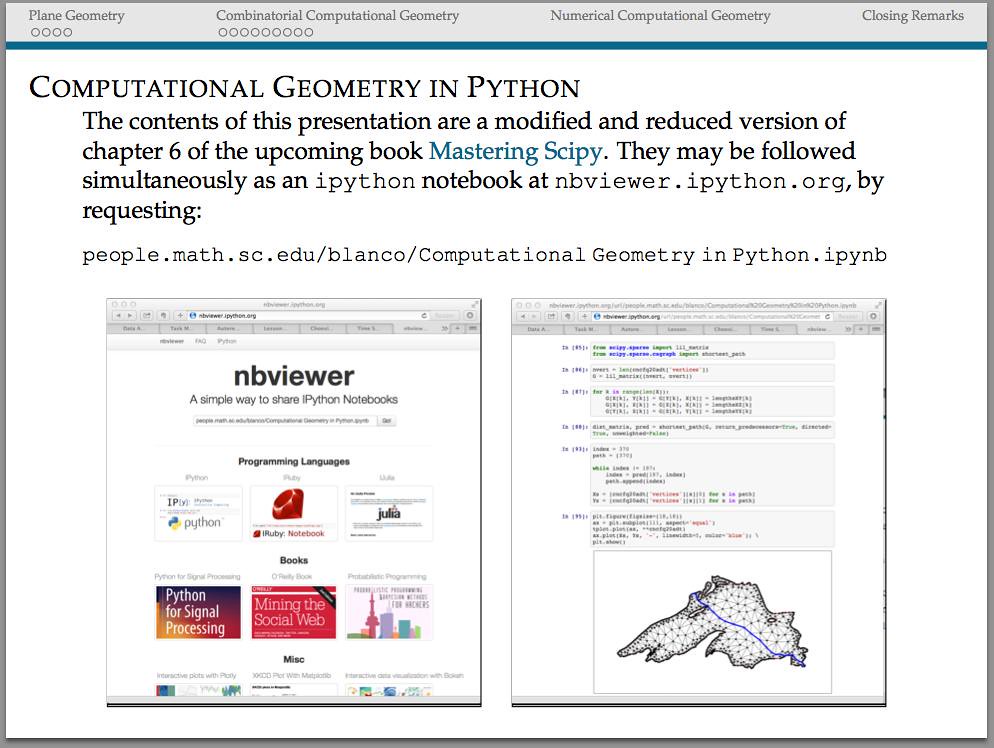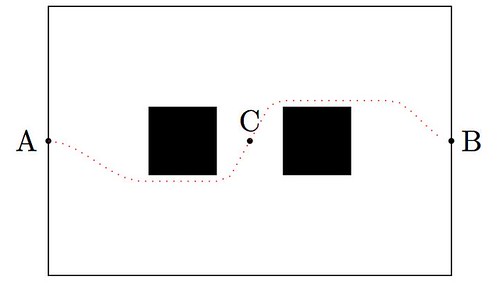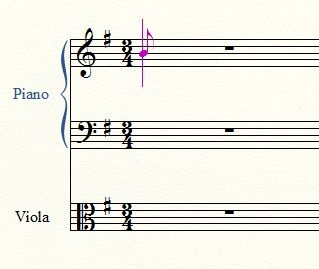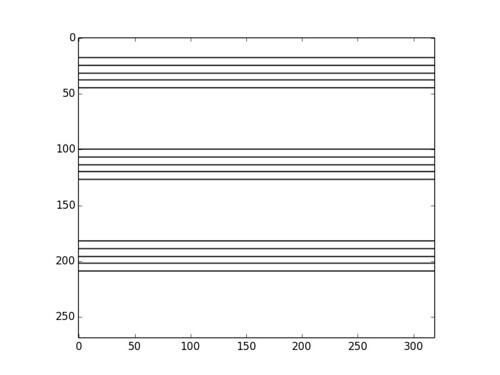Archive
Book presentation at the USC Python Users Group
Areas of Mathematics
For one of my upcoming talks I am trying to include an exhaustive mindmap showing the different areas of Mathematics, and somehow, how they relate to each other. Most of the information I am using has been processed from years of exposure in the field, and a bit of help from Wikipedia.

But I am not entirely happy with what I see: my lack of training in the area of Combinatorics results in a rather dry treatment of that part of the mindmap, for example. I am afraid that the same could be told about other parts of the diagram. Any help from the reader to clarify and polish this information will be very much appreciated.
And as a bonus, I included a script to generate the diagram with the aid of the tikz libraries.
\tikzstyle{level 2 concept}+=[sibling angle=40]
\begin{tikzpicture}[scale=0.49, transform shape]
\path[mindmap,concept color=black,text=white]
node[concept] {Pure Mathematics} [clockwise from=45]
child[concept color=DeepSkyBlue4]{
node[concept] {Analysis} [clockwise from=180]
child {
node[concept] {Multivariate \& Vector Calculus}
[clockwise from=120]
child {node[concept] {ODEs}}}
child { node[concept] {Functional Analysis}}
child { node[concept] {Measure Theory}}
child { node[concept] {Calculus of Variations}}
child { node[concept] {Harmonic Analysis}}
child { node[concept] {Complex Analysis}}
child { node[concept] {Stochastic Analysis}}
child { node[concept] {Geometric Analysis}
[clockwise from=-40]
child {node[concept] {PDEs}}}}
child[concept color=black!50!green, grow=-40]{
node[concept] {Combinatorics} [clockwise from=10]
child {node[concept] {Enumerative}}
child {node[concept] {Extremal}}
child {node[concept] {Graph Theory}}}
child[concept color=black!25!red, grow=-90]{
node[concept] {Geometry} [clockwise from=-30]
child {node[concept] {Convex Geometry}}
child {node[concept] {Differential Geometry}}
child {node[concept] {Manifolds}}
child {node[concept,color=black!50!green!50!red,text=white] {Discrete Geometry}}
child {
node[concept] {Topology} [clockwise from=-150]
child {node [concept,color=black!25!red!50!brown,text=white]
{Algebraic Topology}}}}
child[concept color=brown,grow=140]{
node[concept] {Algebra} [counterclockwise from=70]
child {node[concept] {Elementary}}
child {node[concept] {Number Theory}}
child {node[concept] {Abstract} [clockwise from=180]
child {node[concept,color=red!25!brown,text=white] {Algebraic Geometry}}}
child {node[concept] {Linear}}}
node[extra concept,concept color=black] at (200:5) {Applied Mathematics}
child[grow=145,concept color=black!50!yellow] {
node[concept] {Probability} [clockwise from=180]
child {node[concept] {Stochastic Processes}}}
child[grow=175,concept color=black!50!yellow] {node[concept] {Statistics}}
child[grow=205,concept color=black!50!yellow] {node[concept] {Numerical Analysis}}
child[grow=235,concept color=black!50!yellow] {node[concept] {Symbolic Computation}};
\end{tikzpicture}
Have a child, plant a tree, write a book
Or more importantly: rear your children to become nice people, water those trees, and make sure that your books make a good impact.
I recently enjoyed the rare pleasure of having a child (my first!) and publishing a book almost at the same time. Since this post belongs in my professional blog, I will exclusively comment on the latter: Learning SciPy for Numerical and Scientific Computing, published by Packt in a series of technical books focusing on Open Source software.
Keep in mind that the book is for a very specialized audience: not only do you need a basic knowledge of Python, but also a somewhat advanced command of mathematics/physics, and an interest in engineering or scientific applications. This is an excerpt of the detailed description of the monograph, as it reads in the publisher’s page:
It is essential to incorporate workflow data and code from various sources in order to create fast and effective algorithms to solve complex problems in science and engineering. Data is coming at us faster, dirtier, and at an ever increasing rate. There is no need to employ difficult-to-maintain code, or expensive mathematical engines to solve your numerical computations anymore. SciPy guarantees fast, accurate, and easy-to-code solutions to your numerical and scientific computing applications.
Learning SciPy for Numerical and Scientific Computing unveils secrets to some of the most critical mathematical and scientific computing problems and will play an instrumental role in supporting your research. The book will teach you how to quickly and efficiently use different modules and routines from the SciPy library to cover the vast scope of numerical mathematics with its simplistic practical approach that is easy to follow.
The book starts with a brief description of the SciPy libraries, showing practical demonstrations for acquiring and installing them on your system. This is followed by the second chapter which is a fun and fast-paced primer to array creation, manipulation, and problem-solving based on these techniques.
The rest of the chapters describe the use of all different modules and routines from the SciPy libraries, through the scope of different branches of numerical mathematics. Each big field is represented: numerical analysis, linear algebra, statistics, signal processing, and computational geometry. And for each of these fields all possibilities are illustrated with clear syntax, and plenty of examples. The book then presents combinations of all these techniques to the solution of research problems in real-life scenarios for different sciences or engineering — from image compression, biological classification of species, control theory, design of wings, to structural analysis of oxides.
The book is also being sold online in Amazon, where it has been received with pretty good reviews. I have found other random reviews elsewhere, with similar welcoming comments:
- Artificial Intelligence in Motion by Marcel Caraciolo
- The Endeavour, by John D. Cook
Stones, balances, matrices

Let’s examine an easy puzzle on finding the different stone by using a balance:
You have four stones identical in size and appearance, but one of them is heavier than the rest. You have a set of scales (a balance): how many weights do you need to determine which stone is the heaviest?
This is a trivial problem, but I will use it to illustrate different ideas, definitions, and the connection to linear algebra needed to answer the harder puzzles below. Let us start by solving it in the most natural way:
- Enumerate each stone from 1 to 4.
- Set stones 1 and 2 on the left plate; set stones 3 and 4 on the right plate. Since one of the stones is heavier, it will be in the plate that tips the balance. Let us assume this is the left plate.
- Discard stones 3 and 4. Put stone 1 on the left plate; and stone 2 on the right plate. The plate that tips the balance holds the heaviest stone.
This solution finds the stone in two weights. It is what we call adaptive measures: each measure is determined by the result of the previous. This is a good point to introduce an algebraic scheme to code the solution.
- The weights matrix: This is a matrix with four columns (one for each stone) and two rows (one for each weight). The entries of this matrix can only be
or
depending whether a given stone is placed on the left plate
, on the right plate
or in neither plate
For example, for the solution given above, the corresponding matrix would be
- The stones matrix: This is a square matrix with four rows and columns (one for each stone). Each column represents a different combination of stones, in such a way that the n-th column assumes that the heaviest stone is in the n-th position. The entries on this matrix indicate the weight of each stone. For example, if we assume that the heaviest stone weights b units, and each other stone weights a units, then the corresponding stones matrix is
Multiplying these two matrices, and looking at the sign of the entries of the resulting matrix, offers great insight on the result of the measures:
Note the columns of this matrix code the behavior of the measures:
- The column
indicates that the balance tipped to the left in both measures (and therefore, the heaviest stone is the first one)
- The column
indicates that the heaviest stone is the second one.
- Note that the other two measures can’t find the heaviest stone, since this matrix was designed to find adaptively a stone supposed to be either the first or the second.
Is it possible to design a solution to this puzzle that is not adaptive? Note the solution with two measures given (in algebraic form) below:
Since each column is different, it is trivial to decide after the experiment is done, which stone will be the heaviest. For instance, if the balance tips first to the right (-) and then to the left (+), the heaviest stone can only be the third one.
Let us make it a big harder: Same situation, but now we don’t know whether the stone that is different is heavier or lighter.
The solution above is no good: Since we are not sure whether b is greater or smaller than a, we would obtain two sign matrices which are virtually mirror images of each other.
In this case, in the event of obtaining that the balance tips twice to the left: which would be the different stone? The first, which is heaviest, or the fourth, which is lightest? We cannot decide.
One possible solution to this situation involves taking one more measure. Look at the algebraic expression of the following example, to realize why:
In this case there is no room for confusion: if the balance tips three times to the same side, then the different stone is the first one (whether heavier or lighter). The other possibilities are also easily solvable: if the balance tips first to one side, then to the other, and then to the first side, then the different stone is the third one.
The reader will not be very surprised at this point to realize that three (non adaptive) measures are also enough to decide which stone is different (be it heavier or lighter) in a set of twelve similar stones. To design the solution, a good weight matrix with twelve columns and three rows need to be constructed. The trick here is to allow measures that balance both plates, which gives us more combinations with which to play. How would the reader design this matrix?
Smallest Groups with Two Eyes
Today’s riddle is for the Go player. Your task is to find all the smallest groups with two eyes and place them all together (with the corresponding enclosing enemy stones) in a single board. Let me give you some tips first:
- Smallest groups in the corner: In the corner, six stones are the minimum needed to complete any group with two eyes. There are only four possibilities, and I took the liberty of placing them on the board for you:
- Smallest groups on the side: Consider any of the smallest groups with two eyes on a side of the board. How many stones do they have? [Hint: they all have the same number of stones] How many different groups are there?
- Smallest groups in the interior: Consider finally any of the smallest groups with two eyes in the interior of the board. How many stones do they have? [again, they all have the same number of stones]. How many different groups are there?
Since it is actually possible to place all those groups in the same board, this will help you figure out how many of each kind there are. Also, once finished, assume the board was obtained after a proper finished game (with no captures): What is the score?
The ultimate metapuzzle
If you have been following this blog for a while, you already know of my fascination with metapuzzles. I have recently found one of the most beautiful examples of these riddles in this August’s edition of Ponder This, and following the advice of Travis, I will leave it completely open for the readers to give it a go. Enjoy!
A mathematician wanted to teach his children the value of cooperation, so he told them the following:
“I chose a secret triangle for which the lengths of its sides are all integers.
To you my dear son Charlie, I am giving the triangle’s perimeter. And to you, my beloved daughter Ariella, I am giving its area.
Since you are both such talented mathematicians, I’m sure that together you can find the lengths of the triangle’s sides.”
Instead of working together, Charlie and Ariella had the following conversation after their father gave each of them the information he promised.
Charlie: “Alas, I cannot deduce the lengths of the sides from my knowledge of the perimeter.”
Ariella: “I do not know the perimeter, but I cannot deduce the lengths of the sides from just knowing the area. Maybe our father is right and we should cooperate after all.”
Charlie: “Oh no, no need. Now I know the lengths of the sides.”
Ariella: “Well, now I know them as well.”
Find the lengths of the triangle’s sides.
Where are the powers of two?
The following construction gives an interesting pairing map between the positive integers and the lattice of integer-valued points in the plane:
- Place
at the origin.
- For each level
populate the
points of the plane on the square with vertices
starting from
at the position
and going counter-clockwise.
After pairing enough positive integers on the lattice, pay attention to the powers of two: they all seem to be located on the same two horizontal lines: and
Is this statement true?
El País’ weekly challenge
For a while now, the Spanish newspaper “El País” has been posing a weekly mathematical challenge to promote a collection of books, and celebrate a hundred years of their country’s Royal Mathematical Society.
The latest of these challenges—the fourth—is a beautiful problem in combinatorics:
Consider a clock, with its twelve numbers around a circle:
Color each of the twelve numbers in either blue or red, in such a way that there are exactly six in red, and six in blue. Proof that, independently of the order chosen to color the numbers, there always exists a line that divides the circle in two perfect halves, and on each half there will be exactly three numbers in red, and three numbers in blue.
While there are many different ways to solve this challenge, I would like to propose here one that is solely based upon purely counting techniques.
Unusual dice
 I heard of this problem from Justin James in his TechRepublic post My First IronRuby Application. He tried this fun problem as a toy example to brush up his skills in ruby:
I heard of this problem from Justin James in his TechRepublic post My First IronRuby Application. He tried this fun problem as a toy example to brush up his skills in ruby:
Roll simultaneously a hundred 100-sided dice, and add the resulting values. The set of possible outcomes is, of course, Note that there is only one way to obtain the outcome 100—all dice showing a 1. There is also only one way to obtain the outcome 10000—all dice showing 100. For the outcome 101, there are exactly 100 different ways to obtain it: all dice except one show a 1, and one die shows a 2. The follow-up question is:
Write a (fast) script that computes the different ways in which we can obtain each of the possible outcomes.













